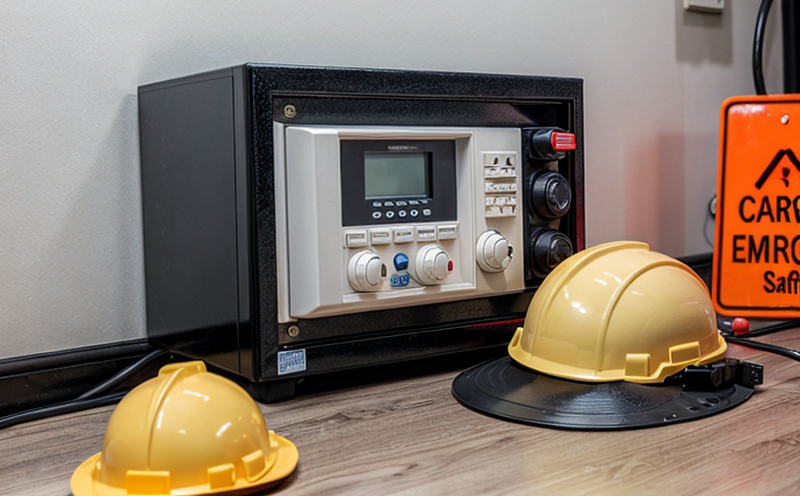SAE ARP 1386 Cabin Safety Demonstration Testing
The SAE ARP 1386 standard specifies requirements and guidelines for testing cabin safety demonstration systems in aircraft. This service ensures that the emergency equipment, such as life vests, oxygen masks, and emergency exits, meets all necessary safety criteria before being installed on commercial or private aircraft.
SAE ARP 1386 is a crucial part of the aviation industry's commitment to passenger safety. It mandates rigorous testing protocols designed to simulate real-world conditions under which cabin safety equipment must function reliably. This includes exposure to various environmental factors like temperature extremes, humidity, and pressure changes that an aircraft might encounter during its operational life.
One key aspect of this testing involves simulating the deployment scenarios for emergency items such as life jackets or oxygen masks. These tests aim to confirm not only that these devices deploy correctly but also that they remain functional after repeated deployments. Additionally, there are checks on how quickly these items become available to passengers once deployed, ensuring an efficient evacuation process.
The testing procedure outlined in SAE ARP 1386 ensures that every component of the cabin safety system undergoes comprehensive evaluation. From the materials used in constructing these devices to their overall functionality under stress conditions, nothing is left unexamined. By adhering strictly to this standard, manufacturers can guarantee compliance with aviation regulations and enhance public confidence in air travel safety.
Compliance with SAE ARP 1386 goes beyond mere regulatory adherence; it represents a commitment towards excellence in product design and manufacturing practices. The meticulous nature of these tests helps identify potential flaws early on, allowing for improvements that ultimately lead to safer flying experiences for all passengers.
The importance of rigorous testing cannot be overstated when considering the critical role played by cabin safety equipment during emergencies. In cases where rapid action is required due to unforeseen circumstances such as engine failure or structural damage, having reliable emergency equipment can mean the difference between life and death. Therefore, ensuring that all components comply with standards like SAE ARP 1386 is paramount.
For organizations involved in the aerospace & aviation sectors, investing in thorough testing ensures not only regulatory compliance but also enhances brand reputation among consumers who prioritize safety above other considerations. It demonstrates a proactive approach towards addressing risks associated with air travel and contributes positively to overall industry standards.
Eurolab Advantages
EuroLab offers unparalleled expertise in conducting SAE ARP 1386 compliance testing for cabin safety demonstration systems, offering several advantages over competitors:
- Comprehensive Testing Capabilities: Our state-of-the-art facilities provide the necessary environments to replicate real-world conditions experienced by aircraft during operation.
- Experienced Professionals: With a team of highly qualified engineers and technicians, we ensure accurate data collection and analysis throughout each testing phase.
- Regulatory Knowledge: Our staff stay updated on the latest developments in aviation safety regulations, ensuring our tests are always aligned with current standards.
- Cost-Effective Solutions: By offering flexible pricing plans tailored to individual project needs, we help clients optimize their budgets while maintaining high-quality outcomes.
In summary, EuroLab's commitment to excellence in SAE ARP 1386 testing translates into reliable results that meet or exceed industry expectations. Partnering with us guarantees not only compliance but also peace of mind regarding the quality and safety of your products.
Customer Impact and Satisfaction
Customers benefit greatly from EuroLab's SAE ARP 1386 cabin safety demonstration testing services. Here are some ways in which these benefits translate into enhanced customer satisfaction:
- Increased Safety: By ensuring that all emergency equipment meets rigorous standards, customers can rest assured knowing their aircraft is equipped with reliable safety features.
- Compliance Assurance: Compliance with SAE ARP 1386 helps clients avoid potential legal issues and penalties associated with non-compliance.
- Better Reputation: Demonstrating commitment to passenger safety through thorough testing enhances a company's reputation within the industry.
- Patient Safety: When passengers know that their safety is prioritized, they are more likely to feel secure and comfortable flying with your airline or manufacturer.
In conclusion, investing in SAE ARP 1386 testing provides tangible advantages for both businesses and consumers alike. At EuroLab, we strive to deliver exceptional results that exceed expectations every time.
International Acceptance and Recognition
The stringent requirements set forth by SAE ARP 1386 have gained widespread acceptance across the globe within the aerospace & aviation sector. This standard is recognized for its comprehensive approach to evaluating cabin safety demonstration systems, ensuring they meet high-quality benchmarks.
Many countries and regulatory bodies worldwide have adopted or referenced this standard in their own guidelines and regulations. For instance, European Union Aviation Safety Agency (EASA) and Federal Aviation Administration (FAA) both consider compliance with SAE ARP 1386 as a critical component of certification processes for aircraft manufacturers.
International acceptance extends beyond regulatory compliance; it reflects the industry's growing emphasis on safety and reliability. As global air travel continues to expand, so too does the need for consistent, high-quality testing methods that ensure passenger safety. SAE ARP 1386 plays a vital role in meeting this demand.
By adhering to these internationally recognized standards, manufacturers can confidently demonstrate their commitment to quality and safety, thereby gaining competitive advantages in both domestic and international markets.





